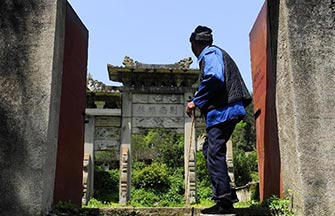China's 'sky eyes' help protect world heritage Angkor Wat
( Xinhua ) Updated: 2015-08-10 14:41:59They can also create 3D visualization of large sites for analysis.
"For the first time ever, our systems are monitoring the temples and their neighboring mountains and rivers. Those temples are sacred places for locals and mean a lot to them. They are grateful and we are proud to help," he says.
UNESCO has been helping the preservation and rebuilding of Angkor Wat since the 1980s. In 1992, Angkor Wat was listed as a World Heritage site.
China began helping with the restoration of the ruins of Angkor in 2000 together with more than 20 countries. Most of the 98 temples were completed by 2013.
"The restoration took a lot of time and effort as the temples were built with stone. Specific stones of the same type and size were required to preserve the originality of the architecture", says Hong.
More tourist facilities had been built to cater for the huge number of visitors and underground water was collected, while the natural environment of Angkor was destroyed by logging activities.
"We noticed, through the 'sky eyes' system, that forests to the north of the heritage site are decreasing as hotels mushroom, and underground water levels are falling. We have reported the discoveries to the site managing authorities for them to deal with,"says Hong.
HIST has been considering extending the three-year agreement with APSARA. It is also ready to help to preserve more world heritage sites.
"Since the Belt and Road Initiative was announced by President Xi Jinping last year, cultural exchanges and cooperation among different member countries and China are ready to develop. The world heritage sites on the Silk Road are our top priorities."
|
|
|
|
|
|
|
|






















 Raymond Zhou:
Raymond Zhou: Pauline D Loh:
Pauline D Loh: Hot Pot
Hot Pot Eco China
Eco China China Dream
China Dream China Face
China Face






